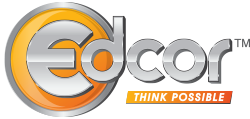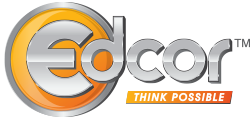Diversity, Equity, and Inclusion (DEI) and employee wellness remain a priority for Fortune 500 CEOs and beyond. Most companies have communicated this with their brand positioning and internal policy changes. However, it’s now time to anchor the DEI strategy in education benefits to tide the wave of the ongoing worker shortage and to continue riding the highs of positive brand associations with these strategies. Especially now, since employees want to see concrete measures being implemented to promote this culture after DEI Consulting and Training have more or less phased out. The last article about DEI outlined why it’s important to make it an ongoing process, and ways to ingrain the culture in your organization. In this one, I intend to outline how you can move beyond Diversity hiring and rely on Education Benefits to be Equitable and Inclusive.

Ways in which Tuition Reimbursement helps promote the DEI culture:
Education benefits have historically been popular as strategic tools for attracting and retaining top talent, employee engagement, and building an internal talent pipeline. However, they also tie in with the DEI strategy and promote inclusiveness in the following ways:
- Level the playing field by providing access to college education imperative for career progression and financial stability
- Cover a part of the soaring cost of college tuitions
- Break financial barriers hindering minority populations to go to school
- Bridge the wide pay disparity between college grads and non-degree holders
- Build a diverse leadership pipeline that embodies the organization’s DEI culture
- Enhance employee engagement and satisfaction by supporting professional development
- Enhance the equity and inclusiveness quotient of the brand
By upskilling employees, organizations can promote talent from within, thereby lowering the cost of hiring and training new talent. This – alone – leads to an ROI of 129% on these programs. Moreover, companies can also take up to $5,250 per year, per employee as a tax deduction. The federal tax law also allows employees to get up to $5,250 in tuition reimbursement tax-free from their employer every year. This makes it a win-win for all parties. Under that same federal tax law, tax-free employer-funded education assistance can cover tuition, fees, books, and some supplies and equipment.
Third-party providers can help secure Debt-free degrees:
However attractive a degree maybe, one cannot deny the fact that they come with a burden of upfront out-of-pocket expenses and student loans. These pose as barriers for minority populations to go back to school. Third-party specialized HR benefits providers, like Edcor, can help secure zero out-of-pocket expense programs in collaboration with their partner schools. Also popularly known as debt-free degrees. These are designed such that the school scholarships or grants cover tuition over and above the employer contribution of $5250+. Most of them have a deferral agreement in place or a direct bill option resulting in no out-of-pocket costs for the employees. This has a direct effect on women and the diversity group since it removes a major barrier to go back to school. More and more schools in our school network are offering these debt-free degrees, and we have seen a positive uptick of these programs with many of our client-employees.
Holistic approach towards Tuition Reimbursement:
Looking beyond traditional degrees is now more important than ever because not all bands of employees would benefit from a degree. Some require Certificates and Certifications for career progression and to fill skill gaps. To make sure that you are truly Inclusive and Equitable, have a holistic approach towards the Tuition Reimbursement Policy. Including short-term upskilling courses like professional Certificates and Certifications under the Tuition Policy is a good starting point.
How Academic Advising anchors Tuition Assistance
Academic Advising makes students better consumers – rather than signing up with the school down the road or the school with the biggest marketing budget – students can make the best choice for their careers. For working adult learners, it takes out the overwhelming pressures to navigate through heaps of information while balancing the act between their personal and professional lives. Advising also helps employees to stretch their tuition assistance or out-of-pocket dollars further. Students leveraging their employer-sponsored tuition assistance benefits have a 90 percent success rate when these benefits are combined with Academic advising – making it the perfect icing on the cake. Academic advising is highly recommended as it accelerates learner success and makes education benefits truly effective.
How Student Loan Repayment Assistance complements your DEI strategy
Next, let’s get some facts straight about the Student Loan Crisis in America before we delve deeper into its ramifications and links to your DEI strategy. You probably know that the U.S. student loan debt stands at a staggering 1.7 trillion from 45 million borrowers, with the average student loan debt amounting to $37,000. But did you know that women owe two-thirds of this student debt? Further, women of color cart a disparate burden – black women have about 20% more student loan debt than their white counterparts. The lack of affordable and quality childcare also affects minority women more. Women were worse off due to lack of childcare during the pandemic – 59% of unemployment claims were from women in the first weeks of the pandemic, despite them being only half of the labor force.
Student Loan Repayment Assistance promotes Inclusivity by:
- Reducing financial worries and enhancing wellbeing of the diverse population
- Affording flexibility in implementation:
- Companies can choose to offer this to a very specific group of employees for DEI, recruitment, and retention purposes or they can offer it widely.
- Primary ways of contributions are through lump-sum bonuses, employer monthly cash inputs, and employee payment matches. Companies can choose which way to go.
- The benefit has infinite possibilities in its design because it is not heavily regulated except around taxation, companies or providers can break the mold and be as creative as needed to fill the gaps and to provide true value for employees.
- Contributions have a lifetime maximum cap and an employment-term clause ensuring that they are tied with the long-term vision of nurturing employees.
Scholarship Administration and your DEI strategy
More and more employers are now offering one-time or renewable scholarships in conjunction with Educational benefits to employee dependents. Employer Scholarships help reduce the ticket price of ever-increasing college degrees and are a great way to show that you care. The best practices around these scholarships are:
- To administer them through third-party benefit providers to alleviate bias and promote inclusiveness.
- To have them for dependents instead of employees to eliminate any possible employee dissatisfaction on not being awarded.
- Put in place a Merit-based Scholarship for children of all employees, and separate Diversity Scholarships targeted towards the diverse population.
- To be cautious about how you define ‘Diversity’ and be clear about the audience you are trying to target through these Scholarships.
We have experience in administering all types of Scholarship programs, so feel free to reach out for counsel or implementation.
A solid communication plan: going the extra mile
Finally, have a solid internal communication plan in place. Having the best policies will not matter unless there is awareness and uptake of the programs. Evaluate what percentage of your diverse population is using the educational benefits, and have a plan in place to remove barriers preventing them to use these benefits. The number one barrier has been a lack of time. Giving employees even an hour each day by adjusting their work schedules can help them in taking up a program that requires 3 – 5 hours of effort per week.
The crux of the matter is that we’ve been talking about DEI for long, but now we need a deeper anchor to showcase intent to nurture a diverse workforce beyond the hiring process. What better way than educational benefits? Reach out to Edcor to see how you can tie in education benefits to your DEI strategy, and broaden your offerings to implement a more inclusive and equitable benefits portfolio.

Edcor is a woman-owned business and is the benchmark in education benefits administration. For 40 years, our customized service and solutions have allowed Fortune 500 Clients to use education benefits programs for employee recruiting, retention, and development. Please feel free to reach out to us!
Spardha Khera, Edcor



